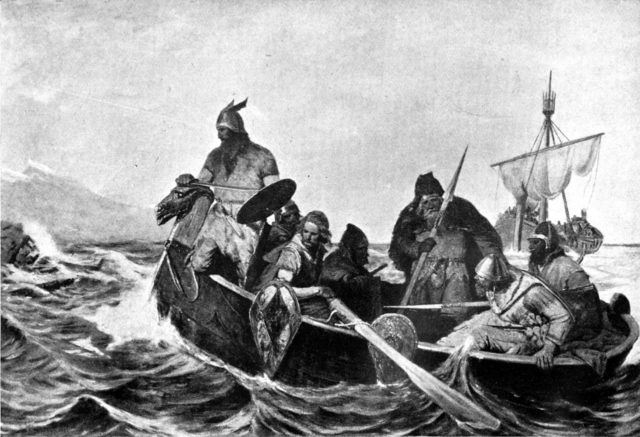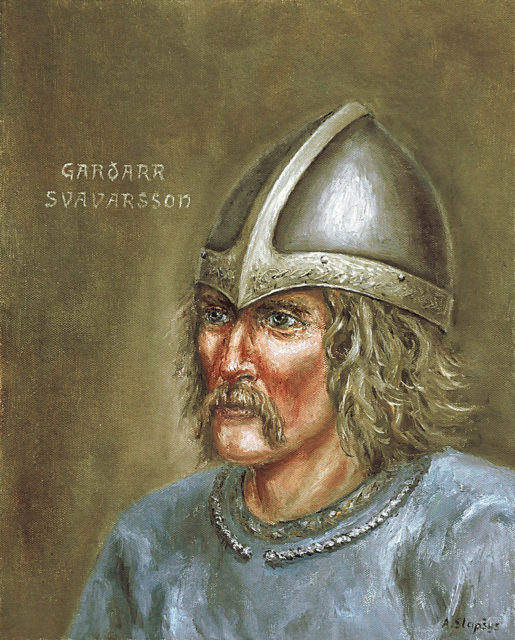Iceland was first settled by Viking explorers and their slaves in around 874 AD.
It initially remained independent from outside rule, with the settlers establishing the Althing, which is now one of the oldest parliaments in the world, to oversee matters of governance in about 930 AD.
Iceland was weakened by a period of internal strife in the mid-13th century and fell under Norwegian, and then Danish, rule.

Genealogy was important for the medieval Icelanders, and not just as a matter of interest. As immigrants, knowledge of their family lineage was essential for establishing titles and property rights.
To start with, family customs included verbally passing their way of life down from parents to children, but eventually, in the 12th century, they committed to writing the earliest works of Icelandic history.
They had two short books called Íslendingabók (The Book of the Icelanders), and Landnámabók (The Book of the Settlement). Both books were written in Old Norse language. The Book of the Icelanders was written in 1122 and 1132 by Ari Thorgilsson, who was a priest from Snaefellsness.
The first Viking who visited Iceland was Garder the Swede. He set out on a voyage in the year 860 from Denmark, which was his home country.
He adventured to Hebrides so he could claim the land his wife inherited. During his travels, he passed through Pentland Firth, a straight between the Orkney Islands to the Scottish mainland. While he was traveling through Pentland Firth, Garder’s ship was caught in a storm and he was blown away into the Atlantic. After some time, he spotted the mountainous coast of an unknown piece of land.
What Gardar had seen was not very exciting. It was the tough Eastern Horn on Iceland’s south-east coast. The land was protected by high cliffs, and large scree slopes were diving into the sea. Gardar was a Viking so he was not scared off by the treacherous coast line.
He followed the land towards the west. Before he knew it, he had sailed all the way around Iceland. After he made it back to where he started, he realised it was an island. Gardar spent close to a year exploring this newly discovered land. While he was there, he spent the winter at Husavik, located on Iceland’s north coast.

Naddod the Viking also accidentally found Iceland. He was sailing from Norway to Faeroe Island when he was blown off his course. He ended up along Iceland’s Eastern cliffs.
Naddod climbed a mountain to look for signs of people living there, and he saw nothing. He left in the middle of a heavy snow storm. Naddod as well gave favorable reports of the island, which he chose to name Snaeland, which means Snowland.
Shortly after Naddod’s return, the Viking Floki vlgerdarson wanted to leave Rogaland with the intention of living in Snaeland. Floki had a reputation as being a great Viking warrior, but was a hopeless settler. Floki had spent his summer hunting seal in north-west Iceland.
He neglected to create any hay, which caused the livestock that he had brought with him to starve to death throughout the winter. This ruined his attempt to settle, but the packed ice in the cliffs stopped him from sailing home. When the ice pack finally broke apart it was too late in the year to attempt to return to Norway, so Floki had to stay another winter.
Thoroughly disappointed by his experience, Floki chose to rename the country Iceland. The name that Floki gave has stuck, although his men gave a more favorable report of the island.
Iceland’s joining of fire and ice must have reminded the residents of the Viking’s legend on how Earth was made. In the legend, the world surfaces in the void between the fire region of Muspel and the frozen region of Niflheim. Today, less than a quarter of Iceland has plants. The remainder of the areas that use to be glaciers are now bare lava fields and ash deserts.
When it was founded by the Vikings, it was around 40 percent willow woodland, birch, and scrub. It would have looked less bare than it does today. Even so, Iceland turned out to be an island that couldn’t be farmed. The Vikings were vulnerable to the variations of the weather and volcanic eruptions.
Hearing the rumors about Iceland, two Norwegian brothers Inglolf and Hrolief made a trip to the Eastern cliffs. They wanted to assess the idea of settling in the late 860’s. The brothers had lost their homes for killing the sons of Jarl Atli of Gaular.
They had liked what they saw, and prepared to emigrate. Ingold had the resources he needed for the expedition, but his brother did not. So Hjorleif set out on a Viking voyage to the country of Ireland. The Vikings’ knack for violence led to fights across Ireland. Hjorleif stole treasure and captured ten Irish slaves that he ushered to Iceland.
Ingolf and Hjorleif set out for Iceland again according to The Book of the Settlement. A study that was done on the volcanic ash called tephra confirmed the date. The landnám layer is over almost all of the island; it has been dated back to 871-872. The evidence of human impact on the environment was found above the layer, and not below it.
Ingolf made sacrifices to the gods and gained favorable signs of what could happen in his future. His brother had different beliefs and never made any sacrifices. The two sailed together until they saw land, and then split up. Hjorleif decided to settle on the south of the coast.
Ingolf, who was seeking guidance from the gods, cast some sacrificial pillars he had created overboard. He then vowed he would settle where they washed ashore. Finding the pillars again took Ingolf three years.

After Hjorleif had spent his first winter in Iceland, he wanted to plant crops. He brought only one ox with him, so he ordered his slaves to drag the plow. It was not long before the servants had enough of his tirades. They murdered Hjorleif and the other men of his party, and then sailed off with the women and his possessions to a group of islands off the Iceland’s southwest coast.
With time, these islands became known as the Isles of the Irish. Quickly afterwards, two of Ingolf’s slaves who were following the coast searching for his high seat pillars found Hjorleifs body.
Ingolf was sad about this killing, but he believed since he did not have faith in his religion that it may have been justified. Ingolf thought the Irish escaped to a city in Iceland and went after them. Catching the Irish off guard while they were eating a meal he had murdered some of them. The others had died while jumping off a cliff in a panic to escape.
After spending most of the winter in Iceland, Ingolf ultimately found his high seat pillars. He named the place Reykjavik, which means the bay of smoke, after the several steaming hot springs around the area. It is now Iceland’s capital.
After Ingolf took possession of the land and settled his loyal people and slaves there. More Vikings followed shortly. The Book of the Settlements gave names of 400 settlers, and they had brought wives, children, and their servants with them.
Around 20,000 people could have migrated to Iceland around the year 900. By the 11th century, the population had reached around 60,000 people. There was a small amount of immigration after 930, but by that time all of the best land had been claimed.
